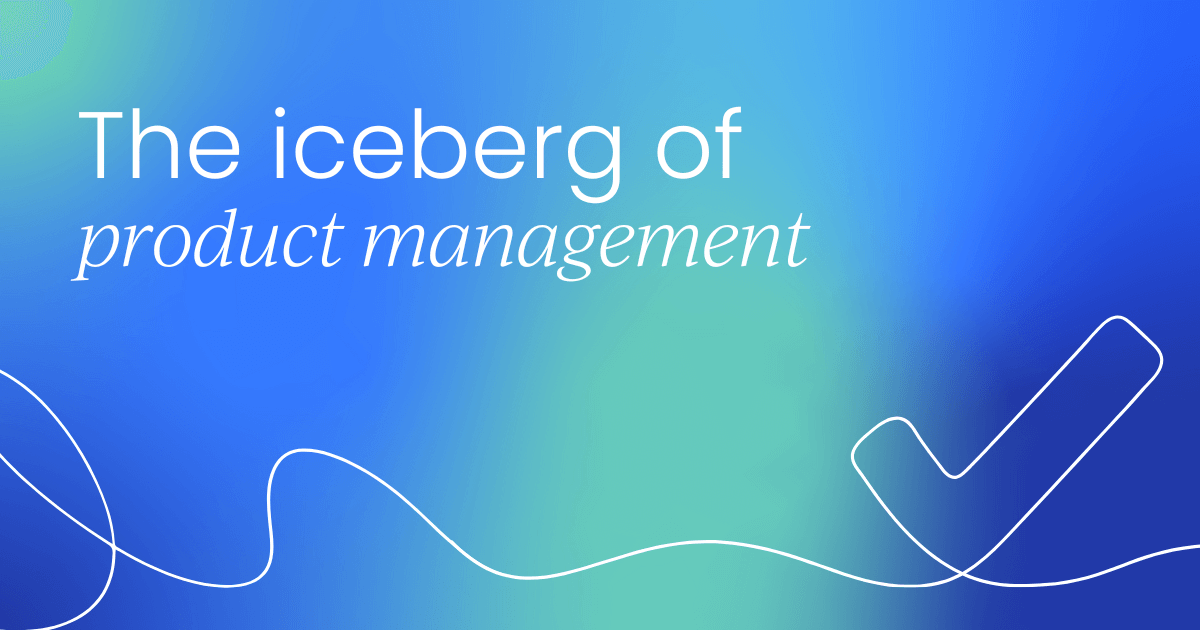When people think of product management, they often picture the final product—a sleek, user-friendly solution ready to be launched into the market. To many, it appears that product managers simply whip up a wireframe, hand it off, and the magic happens. But this is just the tip of the iceberg.
What most don’t see is the vast and intricate process that lies beneath the surface, where the real work takes place. This invisible 80% encompasses ideation, strategy, development, and more—all the way to post-launch maintenance.
The phases of product management
Ideation and market research
It all starts with a concept, but even before the idea is fully formed, product managers need to dive deep into market research. This includes analyzing competitors, identifying gaps in the market, conducting customer interviews, and aligning the product vision with the company's overall goals. The level of research involved requires attention to detail, intuition, and an understanding of both the market and the customer.
Product-market fit
Once a concept is born, the next phase is ensuring that the product fits a genuine market need. This involves constant iteration, validation, and refinement. Product managers must lead discussions with stakeholders, balancing their vision with market realities. It's a cycle of testing, failing fast, learning, and pivoting.
Development planning
This is where the ideation begins to take shape, and where product managers start coordinating with engineering teams. Wireframes, epics, user stories, and roadmaps are meticulously crafted. But it’s not just about the wireframes; it's about creating a solid, actionable plan that aligns the cross-functional teams (engineering, design, sales, marketing, and support).
Collaboration and cross-functional team dynamics
As the product manager, you are the glue holding cross-functional teams together. This means balancing technical and business perspectives, managing the expectations of stakeholders, communicating effectively across departments, and ensuring that the entire team is aligned on the vision.
Development and execution
When development begins, the product manager's job doesn’t stop. Instead, it accelerates. Monitoring the development process, resolving bottlenecks, and making real-time decisions are part of the daily grind.
Sprint planning, backlog grooming, and continuous feedback loops between engineers, designers, and stakeholders keep the process moving. The product manager ensures that the product remains on course, even when unforeseen issues arise.
Stakeholder management
Keeping leadership, stakeholders, and other departments informed and involved is critical. Product managers serve as the primary point of communication, reporting on progress, risks, and timelines. Managing expectations, especially when priorities shift or timelines change, is essential to maintaining trust and support.
Product marketing and sales enablement
Even after development, the journey is far from over. Product managers often wear the hat of a product marketer, ensuring that the product’s positioning, messaging, and go-to-market strategy are on point. This also involves enabling sales teams with the right tools, materials, and training, ensuring they understand the product deeply and can effectively sell its value.
Launch and post-launch
Launching a product is a high-stakes, high-pressure event. Product managers oversee everything from beta testing and feedback loops to coordinating with marketing and customer support for a smooth release.
But even post-launch, the work continues with gathering customer feedback, monitoring performance, and implementing any necessary fixes.
Maintenance and iteration
After launch, maintaining and continuously improving the product becomes a top priority. Bugs need fixing, customer feedback needs addressing, and new features must be prioritized. Product managers remain in the thick of it, ensuring that the product remains competitive, useful, and relevant.
The attention to detail
Product management is about juggling multiple tasks, all requiring meticulous attention to detail. Every phase has its own intricacies—whether it's crafting an airtight user story, managing the nuances of cross-team communication, or drilling down into the specifics of a pricing model. A product manager has to zoom in to manage the details while also keeping the big picture in mind.
The multi-tasking and hands-on experience
Product managers are constantly switching between high-level strategy and day-to-day operational tasks. One moment, they are leading a strategic discussion with C-level executives; the next, they are refining a user story with developers.
This hands-on involvement across every facet of the product lifecycle is what drives the product forward. Every decision has to be made with foresight, balancing business goals, user needs, and technical constraints.
Cross-functional team dynamics
At the core of every successful product is a strong, collaborative team. Product managers often act as translators between technical and non-technical stakeholders, ensuring that every part of the team is aligned.
Navigating the challenges of cross-functional team dynamics—balancing different priorities, managing conflicts, and fostering a collaborative culture—is a critical part of the job.
The stress of product management
Product management is not for the faint of heart. There is constant pressure to deliver, with tight deadlines, competing priorities, and the weight of decision-making always looming.
Each decision made can influence the future of the product, its success in the market, and ultimately, the company’s bottom line. The stress of balancing multiple responsibilities while maintaining a clear product vision can feel overwhelming.
The iceberg below the surface
So, when people see the polished final product, they see just the tip of the iceberg. Below the surface is a vast, complex process filled with research, planning, development, collaboration, stress, and constant learning. It’s not just about creating a wireframe. It’s about steering a product from concept to reality while managing a web of responsibilities that touch every corner of the company.
In short, product management is the art of making the complex seem simple—and the unseen work below the surface is where the true value lies. When you’re responsible for product management, product marketing, product ownership, sales enablement, and training, the weight of that iceberg is heavier than most could imagine. But without those unseen efforts, the visible tip of the iceberg wouldn’t even exist.
The quest for innovative strategies to captivate, retain, and convert users into loyal customers never stops. Luckily, there's a game-changing approach that's been taking the business world by storm: Product-Led Growth (PLG) Conversion.
If you want to unlock sustainable growth, increase revenue, and build a thriving user base, you've come to the right place - because this ebook is your ultimate guide.




 Follow us on LinkedIn
Follow us on LinkedIn




